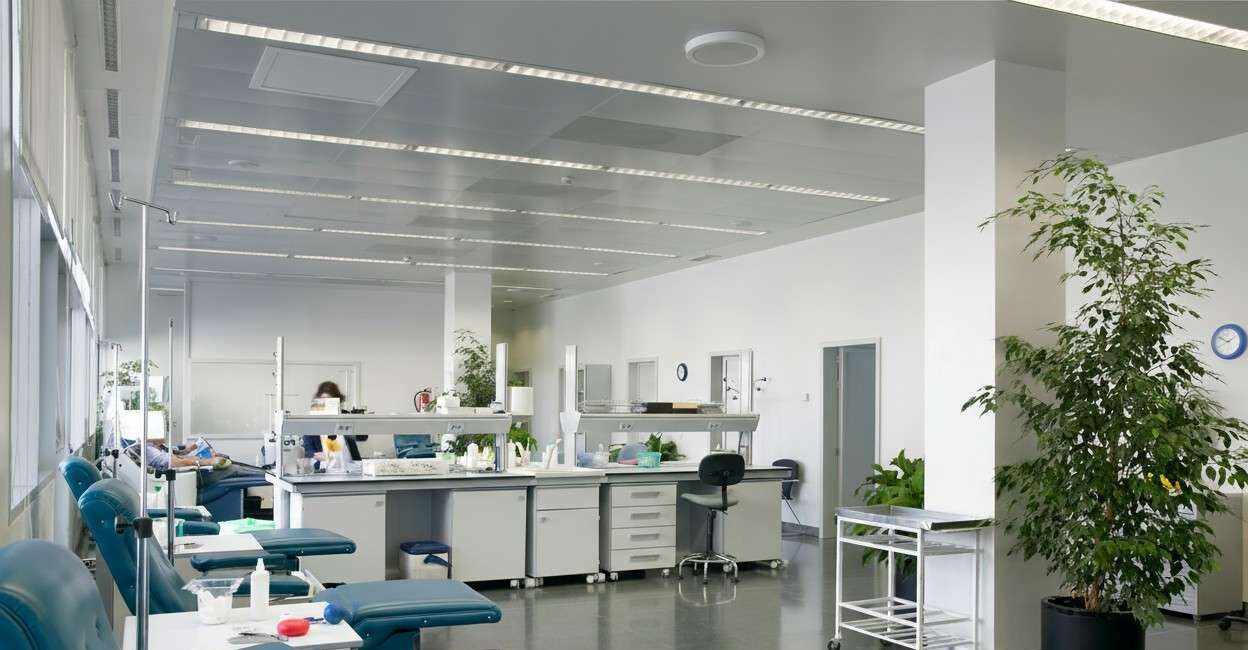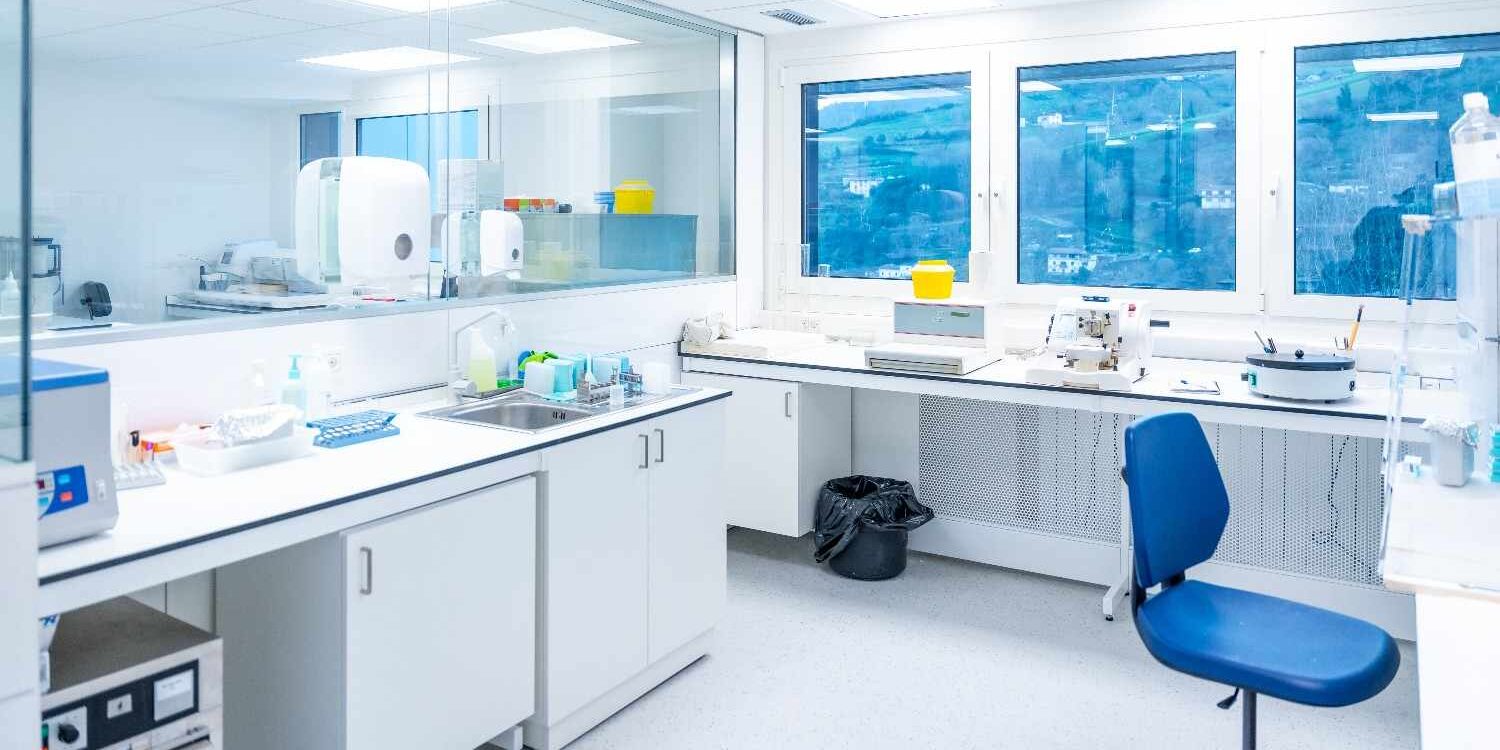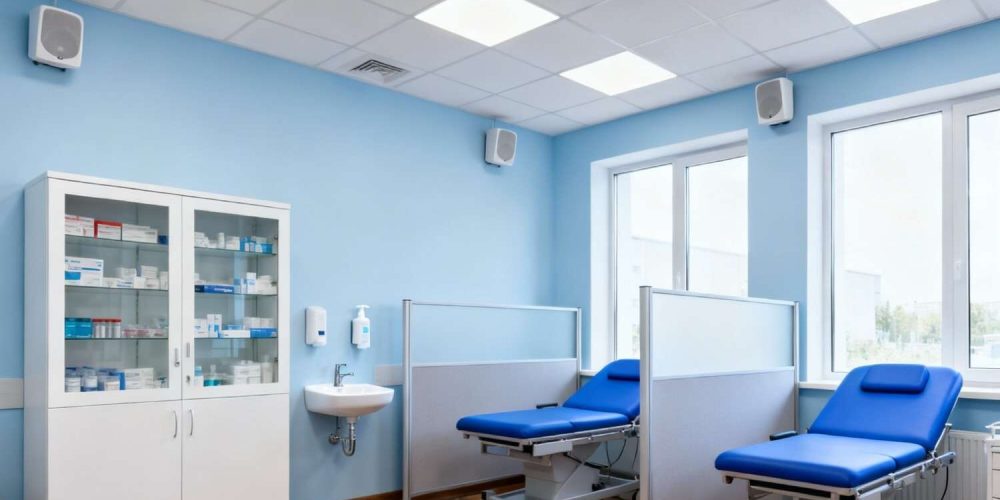Summary : Effective communication is vital in sterile environments like medical and research cleanrooms. Installing specialized cleanroom speakers ensures clear, reliable communication without risking contamination or workflow disruptions. Designed to meet ISO and FDA standards, these systems support staff coordination, emergency alerts, and efficiency while maintaining strict sterility. Learn how professional cleanroom speaker installation enhances safety, compliance, and productivity in controlled environments.
Click Here for a Quick Summary


Cleanrooms are specialized environments designed to maintain strict contamination control, which is essential for preserving the integrity of critical procedures in medical and research settings. These spaces are meticulously regulated, with precise protocols to ensure the highest cleanliness and safety standards. Within these controlled environments, maintaining effective communication is a significant challenge due to the use of protective gear and physical barriers.
This is where cleanroom speaker installation becomes indispensable. Properly installed speaker systems facilitate clear, uninterrupted communication, allowing staff to coordinate operations, respond to emergencies, and relay critical instructions without compromising the sterility of the environment. The presence of a reliable audio system not only supports day-to-day operations but also enhances safety and compliance, making it a vital component of any well-functioning cleanroom. This article will discuss cleanroom speakers’ critical role and impact on operational efficiency and safety.
Cleanrooms are highly specialized environments designed to maintain stringent contamination control, essential for conducting sensitive operations in medical, pharmaceutical, and research facilities. These spaces are carefully regulated to minimize the presence of airborne particles, microbes, and other contaminants that could compromise the quality and safety of research or medical procedures. The design and operation of cleanrooms follow strict guidelines, such as ISO classifications and FDA regulations, to ensure that they meet specific cleanliness and safety standards.
Cleanrooms are classified based on the International Organization for Standardization (ISO) standards, which dictate the maximum allowable particle count per cubic meter of air. ISO classifications range from ISO Class 1 (the cleanest) to ISO Class 9, with Class 1 allowing the least particulate contamination. Common classifications for medical and research facilities are ISO Class 5 to Class 8, where particles and contaminants must be carefully controlled.
In the United States, the Food and Drug Administration (FDA) also regulates cleanrooms, particularly for pharmaceutical manufacturing and biomedical research. Facilities must comply with FDA guidelines for Good Manufacturing Practices (GMP) to ensure product safety and efficacy. Each classification and regulatory standard affects how cleanrooms are designed, operated, and equipped.

Medical and research cleanrooms face unique challenges in maintaining sterile conditions and preventing contamination. Even the slightest increase in particulate matter can jeopardize product safety or compromise the validity of research findings. Key challenges include:
The stringent requirements of a cleanroom environment influence the selection of all equipment, including audio communication systems. For cleanroom speaker installation, choosing materials that are resistant to microbial growth, easy to clean, and designed to prevent particle accumulation is crucial. Also, speakers must be sealed to prevent air or particle leakage, ensuring they do not disrupt the controlled environment. Installing standard audio systems could risk contamination, making specialized cleanroom speakers necessary for maintaining compliance and operational integrity.

In high-stakes environments such as laboratories, hospitals, and pharmaceutical manufacturing facilities, maintaining clear and real-time communication is essential for ensuring the accuracy and safety of operations. However, the stringent contamination control measures in these settings pose unique challenges. This is where effective cleanroom speaker installation plays a crucial role. Specialized cleanroom speakers support communication without compromising sterile conditions, enhancing operational efficiency and safety.
One of the primary benefits of cleanroom speaker systems is the ability to facilitate remote communication. In controlled environments with limited direct contact, speakers allow staff to communicate instructions, share updates, and coordinate activities without physically entering or exiting the cleanroom. This reduces unnecessary movement, critical for maintaining cleanliness and minimizing contamination risks. For example, technicians in the control room can communicate with researchers or medical personnel inside the cleanroom, providing guidance or issuing alerts without disrupting the sterile environment.
Proper cleanroom speaker installation enables seamless communication for various scenarios, ensuring that all staff are well-informed and can respond promptly. Some key use cases include:
One critical concern in a sterile environment is the potential for cross-contamination due to unnecessary physical presence and movement within the cleanroom. Each time personnel enter or exit the cleanroom, there is a risk of introducing contaminants, even with stringent protocols in place. Installing a high-quality cleanroom speaker installation system minimizes this risk by reducing the need for physical interactions and allowing staff to communicate effectively from designated control rooms or adjoining areas.
Selecting the right speakers for cleanroom environments is crucial to maintaining communication efficiency while adhering to strict contamination control standards. A properly executed cleanroom speaker installation involves choosing components that meet stringent regulatory requirements and perform reliably under challenging conditions. Below, we explore key considerations when choosing speakers for these specialized settings.
Cleanroom environments require speakers specifically designed to minimize the risk of contamination and withstand rigorous cleaning protocols. Standard audio equipment is unsuitable, as it may harbour particles, degrade under harsh cleaning agents, or compromise the cleanroom’s air quality.
Both wireless and wired speaker systems have advantages and limitations in a cleanroom setting. Understanding your facility’s unique requirements is critical when deciding which system to implement for effective cleanroom speaker installation.
Achieving optimal speaker placement in a clean environment is essential for ensuring clear sound distribution without disrupting the controlled environment. Poor placement can result in sound distortion, uneven coverage, or interference with airflow systems, which is critical for maintaining a cleanroom’s air quality.
Effective communication is crucial in any cleanroom environment, whether it’s a pharmaceutical lab, medical facility, or research centre. At Network Drops, we specialize in professional cleanroom speaker installation to ensure seamless, clear communication without compromising the sterile conditions of your facility. Our team understands the unique demands of controlled environments and provides solutions tailored to meet strict regulatory requirements and withstand rigorous cleaning protocols. With our expertise, you can be confident that your communication systems will perform reliably, supporting your operations while maintaining compliance and safety.
Contact Network Drops today to discuss your cleanroom speaker needs and learn how our specialized installation services can enhance your facility’s functionality and safety.
Cleanroom environments have strict requirements for contamination control. Standard speakers may emit particles or harbour contaminants, compromising sterile conditions. Specialized cleanroom speaker installation ensures that the speakers meet stringent cleanliness standards, resist microbial growth, and withstand harsh cleaning procedures without degrading.
Cleanroom speakers facilitate real-time communication, allowing staff to relay critical information, respond quickly to emergencies, and provide instructions without physically entering or leaving the controlled environment. This minimizes movement, reduces the risk of contamination, and ensures staff safety and compliance.
Key features include sealed designs, smooth, non-porous surfaces, and resistance to water, dust, and cleaning agents. Look for IP-rated speakers (IP65 or higher) and materials that are easy to sanitize and compatible with sterile environments.
Cleanroom speaker systems should be tested annually and inspected regularly to ensure performance reliability. Maintenance should include cleaning, calibrating, and checking for potential signal interference or component wear.
Yes, cleanroom speakers can be integrated with alarm systems, intercoms, and public address systems, allowing for centralized communication and emergency response coordination throughout the facility.
"*" indicates required fields
Scott Fcasni is the driving force behind Shock I.T. Support’s commercial datacomm cabling division, delivering expert solutions that power reliable, high-performance network infrastructures. With extensive experience in structured cabling and a commitment to precision, Scott ensures that every project—whether for small businesses or large enterprises—meets the highest standards of quality and scalability.